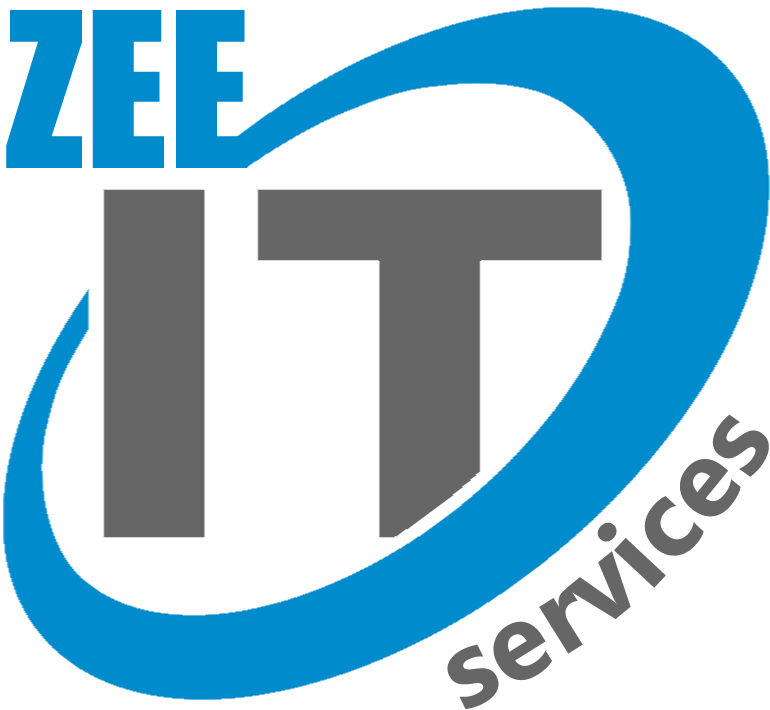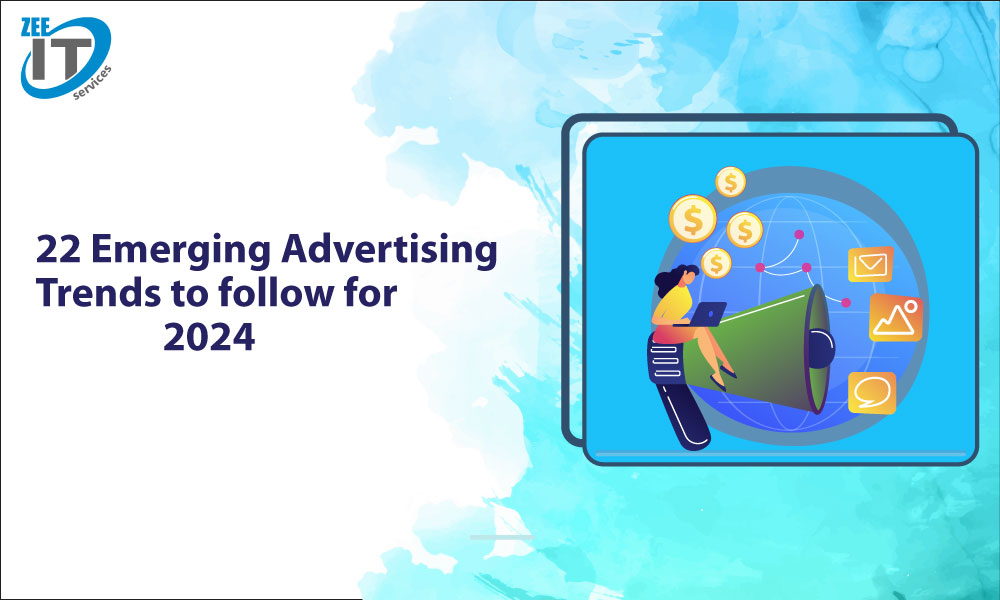The advertising world is changing fast in 2024, and you need to keep up with the new strategies and trends that will shape the industry. Recent years have seen a fast growth of the advertising sector due to changes in consumer behavior, market dynamics, and technological improvements. In 2023, the worldwide digital advertising industry was estimated to be worth $601.8 billion, with media advertisements making up 67.1% of total spending.
Digital platforms have taken over from traditional advertising channels, giving businesses new opportunities to connect and interact with their audience in deeper ways. It is vital for advertising to remain up to date on the most recent trends and advancements influencing the sector in light of the present situation of growth and innovation. To keep you up to date we present here some latest trends of 2024 to boost your advertising efforts and achieve your goals with more clarity.
Video Advertising Trends
Video advertising is changing a lot in recent years, due to how people watch and what they want to see. People have shorter attention spans and use their phones more, so video ads are getting shorter and more to the point, usually lasting from a few seconds to a minute. Video ads are also getting more interactive and personalized, using technologies like interactive overlays, shoppable links, and dynamic creative optimization to get viewers involved and show them what they like.
Popular Platforms and Formats for Video Ads
There are many platforms and formats for video advertising, and each one has something different to offer. TikTok is a great platform for short-form video ads that connect with audiences. YouTube is a giant for video advertising, giving brands a huge audience and smart targeting options through TrueView ads, skippable pre-roll ads, and bumper ads. Instagram Reels, Snapchat Spotlight, and Facebook Stories are also popular platforms for video ads, giving brands immersive and interactive formats to show off their products and services.
Benefits of video advertising:
- Video ads can capture and hold the attention of viewers, making them more likely to interact with the brand and its message.
- Video ads can create memorable impressions on viewers, making them more likely to remember the brand and its products or services.
- Video ads can convey emotions and stories in a visually compelling way, making them more effective at communicating the brand’s values and personality.
Challenges of video advertising:
- Video ads have to compete with a lot of content on various channels, making it harder to keep the viewers’ attention and interest.
- Video ads require more bandwidth than other types of ads, making them vulnerable to buffering or slow load times in some regions or on mobile networks.
Social Media Advertising Trends
Social media platforms are a big part of advertising strategies, giving brands amazing chances to connect with their audience in a fun and interactive way. Social media platforms are always changing and improving their advertising options to suit the different needs of advertisers and users. From simple display ads to awesome augmented reality experiences, social media advertising has grown a lot in giving brands new ways to engage with their audience.
Platforms like Meta (formerly Facebook), Instagram, Twitter, and LinkedIn are spending a lot of money on new ad formats and targeting options, helping advertisers reach their audience with accuracy and efficiency. Also, the addition of e-commerce features on social media platforms is creating new ways for brands to sell their products directly on social media, making advertising and commerce closer than ever.
Emerging Platforms and Features
Besides the big social media platforms, new platforms and features are also changing the social media advertising scene. Platforms like Clubhouse, with its audio-based social networking model, and Snapchat Spotlight, which shows user-generated content, are getting popular among users and advertisers. These platforms give brands unique chances to engage with their audience in creative and immersive ways, reaching new people and building stronger relationships. Features like Instagram Reels, TikTok Ads, and Twitter Spaces are also growing fast, giving advertisers new ways to reach and attract their audience with short-form video content and live audio conversations.
Benefits of social media advertising:
- Social media platforms have a huge user base, giving advertisers access to a large and diverse audience across the world.
- Social media platforms allow advertisers to showcase their brand and products in creative and engaging ways, increasing brand awareness and recognition among consumers.
- Social media platforms offer smart targeting options based on factors such as demographics, interests, and behavior, enabling advertisers to deliver personalized and relevant ads to their ideal customers.
Challenges of social media advertising:
- Social media platforms are crowded with content and ads from various brands, making it harder for advertisers to stand out and capture consumer attention.
- Social media platforms charge advertisers based on different metrics, such as impressions, clicks, or conversions, which can vary depending on the platform, the ad format, and the competition.
- Social media platforms collect and use user data for advertising purposes, which can raise privacy issues among consumers and regulators, requiring advertisers to follow strict rules and best practices to protect user data and privacy.
eCommerce Advertising Trends
eCommerce is booming because it changes the way people shop and what technology can do for them. eCommerce platforms are improving their advertising options to suit the needs of brands and consumers.
Integration and Enhancement of eCommerce Advertising Options:
eCommerce platforms are adding advertising solutions to their platforms, giving brands easy access to targeted audiences and powerful advertising tools. Platforms like Amazon, Shopify, and Pinterest have many advertising options that let brands promote their products and reach customers at different stages of buying. From sponsored product listings to carousel ads and shoppable pins, eCommerce platforms let brands create engaging and personalized advertising experiences that drive engagement and sales.
Innovative and Influential Platforms and Features:
Amazon, the retail giant, is a leader in eCommerce advertising, with its advertising platform offering smart targeting and huge reach to millions of shoppers. Shopify, on the other hand, has changed the world of online commerce with its customizable storefronts and marketing tools, helping brands build and grow their eCommerce businesses. Pinterest, with its visual platform, is a place for eCommerce inspiration and discovery, with features like shoppable pins that let brands connect with consumers and sell directly from the platform.
Benefits of eCommerce advertising:
- eCommerce advertising can drive more sales by reaching consumers who are ready to buy and showing them relevant and persuasive ads.
- eCommerce advertising can boost brand awareness and recognition by showcasing products and services on popular and trusted platforms.
- eCommerce advertising can deliver personalized and tailored ads to specific audiences based on user data and targeting options, increasing the chances of conversion and loyalty.
Challenges of eCommerce advertising:
- eCommerce advertising can face skepticism and distrust from consumers who may view sponsored content as biased or less credible, requiring advertisers to build trust and credibility with their audience.
- eCommerce advertising can expose brands to fraud risks, such as fake clicks, bots, and identity theft, requiring advertisers to implement robust security measures and monitor their advertising campaigns to prevent fraud-related losses.
Audio Digital Marketing Trends
Audio content and platforms are getting more popular, giving advertisers new and exciting ways to connect with their audience. People are using their phones and devices more to listen to audio platforms for fun, learning, and information. Podcasts are especially popular, giving advertisers a great chance to reach loyal and interested audiences through sponsored ads and placements.
Relevant and Emerging Platforms and Formats
Podcasts are a big thing in audio digital marketing, with millions of listeners enjoying different shows on different topics. Brands can use podcast advertising to reach the right audiences and match their message with the content that listeners care about. Platforms like Spotify also give advertisers access to a huge user base of music lovers, giving them chances for audio ads and branded playlists to make their brand more visible and engaging. Voice assistants, like Amazon’s Alexa and Google Assistant, are also becoming more part of people’s lives, giving brands the chance to deliver personalized experiences and get voice search traffic through optimized content and advertising.
Benefits of Audio Digital Marketing:
- Enables deeper connections with audiences through immersive storytelling and genuine messaging.
- Evokes emotions and fosters relatability on a personal level, leading to increased brand loyalty and affinity.
- Allows brands to reach niche audiences and engage with them in environments where traditional visual advertising may not be as effective.
Challenges of Audio Digital Marketing:
- Lower visibility compared to visual content, which may make it harder for ads to capture attention in a crowded digital landscape.
- Possible accessibility issues for audiences with hearing problems, requiring brands to ensure their content is accessible to all users.
- Advertisers must find a balance between creativity and accessibility to ensure their audio campaigns reach and resonate with diverse audiences effectively.
Mobile Advertising Trends
Mobile devices and apps are changing the advertising world, giving brands amazing chances to connect with consumers on the go. People use their phones and tablets for everything, from browsing the internet, to using social media, to shopping online. That’s why mobile advertising is so popular, letting brands reach consumers wherever they are, at any time of day. Mobile apps are especially good for advertising, giving brands engaged audiences and immersive ad experiences.
Essential Platforms and Innovative Features
Some platforms and features are very important for mobile advertising success, with big names like Google and Apple leading the way in innovation and ad technology. Google’s huge ad network, including platforms like Google Ads and AdMob, lets advertisers reach billions of users across different mobile apps and websites through targeted display and video ads. Apple’s App Store and in-app advertising platform give brands chances to promote their apps and get downloads through search ads and app store listings. Besides these big players, new ad formats like augmented reality (AR) ads and playable ads are getting popular, giving brands new ways to engage with audiences and get conversions on mobile devices.
Benefits of Mobile Advertising:
- Higher convenience for consumers, as ads can be accessed anytime, anywhere on mobile devices.
- Increased reach, with a vast audience of mobile users accessible to brands.
- Better targeting capabilities, allowing brands to deliver personalized and relevant ads based on factors such as location, demographics, and user behavior.
- Ability to capture audience attention during moments of high engagement on mobile devices, leading to increased brand awareness and interest.
Challenges of Mobile Advertising:
- Lower control over ad placement, as ads may appear in various locations within mobile apps or websites.
- Device compatibility issues, with a wide range of devices and screen sizes in the mobile ecosystem requiring advertisers to optimize ads for different platforms.
- Need for ensuring a smooth user experience across various devices and platforms to maximize effectiveness and achieve optimal results.

